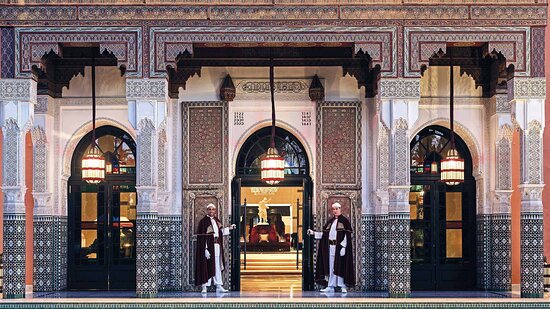If you’ve been to La Mamounia, do not worry: the newest version of the Mediterranean palace, originally built in 1922, has retained both its historical elegance and its charm. If you haven’t, get your post-Covid bucket list out because the mansion, its four restaurants, four bars, and various pavilions have not only been redesigned, they have
In the past, the hotel décor mixed art deco and historical Moroccan craftmanship, but the pair was inspired by modern Moroccan design—suddenly, the old and the new could co-exist. Instead of simply renovating the iconic Churchill Bar, now Le Churchill located away from the main traffic axis, they moved it somehow, created a luxuriously intimate cinema next door, and a tea salon nearby. Suddenly, there was a fresh traffic pattern that leads to what feels like another wing in the main building.
From L’Asiatique by Jean-Georges, a new restaurant with Chinese, Japanese and Thaï influences, to a revamped L’Italien (now also under Mr. Vongerichten’s direction), to the Salon de Thé par Pierre Hermé and the clubby Oenothèque where 12 guests sit at an oblong table at the cellar level amongst more than 2000 rare wines, Mr. Jouin and Mr. Manku have molded the various landscapes of the new eateries and lounges. Through light, reflections and color combinations, each space has found its own identity allowing the chefs to create their own menus on their own canvass.
“We did all the planning and all the training by zoom,” said Mr. Vongerichten. ‘This is our first restaurants in North Africa and when I was finally able to go there in November, I was enthralled by the magic of it all.”
Three two-stories-high “lanterns” placed outside the Italian restaurant resemble an art installation inspired by the desert and the nearby Atlas mountains, but two of them open up to reveal private lounge spaces while the third hides the ochre staircase that leads to the Oenothèque.


